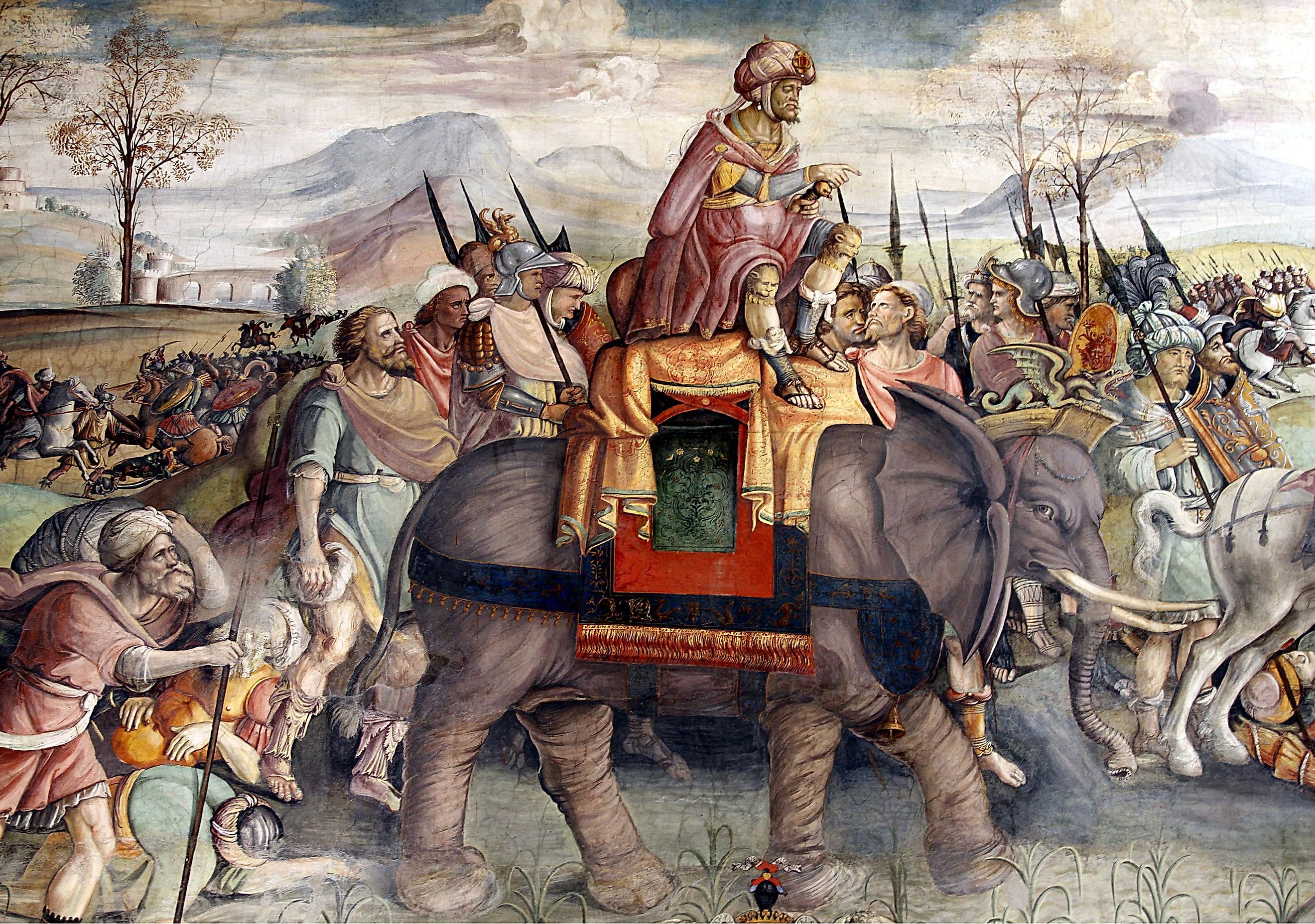
Carthage: The Ancient Empire That Nearly Destroyed Rome
In the early 2nd century AD, the Roman Empire dominated the Ancient World. Aside from regional disputes with the Persian Empire in the east, Rome was unrivaled. The next 100 years marked an era of unprecedented peace and prosperity that would be aptly remembered as the Pax Romana, meaning "Roman Peace" in Latin.
This century of peace was not easily achieved, however. There were many times in the early history of Rome when it was not only on the back foot but on the losing side of wars and power struggles. The Romans came to blow with many worthy adversaries but none were nearly as potent as Carthage. Based on what today is Northern Tunisia, the Carthaginians not only posed a direct threat to Roman expansion but nearly destroyed the upstart empire before it ever began. If Carthage was successful in its aims not only would it have destroyed Rome, but it would have changed world history forever.
Sailors From a Faraway Land
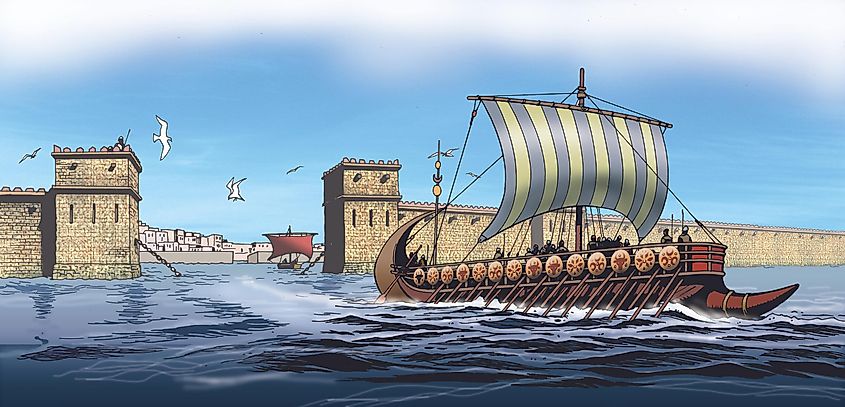
According to Phonecian myth, the city of Carthage was first founded sometime around 817 BC by sailors and traders who hailed from modern-day Lebanon. The city was most likely founded much later but its attachment to the Levant and its Phonecian roots remained a key part of the city's identity.
The Carthaginians were known to be expert sailors and outstanding merchants and traders. They traversed the Mediterranean Sea and traded with countless tribes, kingdoms, republics, and empires that touched its shores. The trade missions that Carthage funded were so ambitious that there is strong evidence that they went as far north as the British Isles in search of precious metals such as tin.
In 332 BC, Carthage was gifted with a mass influx of refugees fleeing the recent conquest and destruction of the Phonecian city of Tyre at the hands of Alexander the Great. The traders and wealthy elite of the city, all of whom could afford to pay for transport out of the city, resettled within their sister city on the other side of the Mediterranean. This brought about a huge economic boom to Carthage and pushed it towards further expansion. By 270 BC, Carthage had established a vast trade network and set up sizable colonies across North Africa, Sicily, Sardinia, Corsica, and Southern Spain.
An Empire Of Trade And Commerce
The Carthaginian Empire was not typical within the ancient world. Its main objective was not to conquer large swathes of land and subjugate its people but rather establish lucrative trade agreements and open themselves up to new markets. Carthaginian diplomats often approached tribal peoples in Spain or North Africa with the proposition of opening up trade with Carthage in exchange for military aid and protection from their rivals. Carthage's large navy gave it the ability to move both goods and soldiers around the Mediterranean with relative speed, allowing it to respond quickly should its newfound ally need assistance.
Carthage was far from some benevolent figure in the ancient world and did, of course, take land. But this was usually done in a much less abrasive and destructive fashion when compared to the Roman method. The land that Carthage occupied was usually loosely administered by them and focused heavily on incorporating the local population without the erasure of their culture. This type of indirect rule allowed the new Carthaginian subjects to still retain their unique way of life while also granting Carthage a place to establish centers of trade and commerce. These distant trading posts could then also be utilized to project Carthaginian military might if needed.
The First Punic War
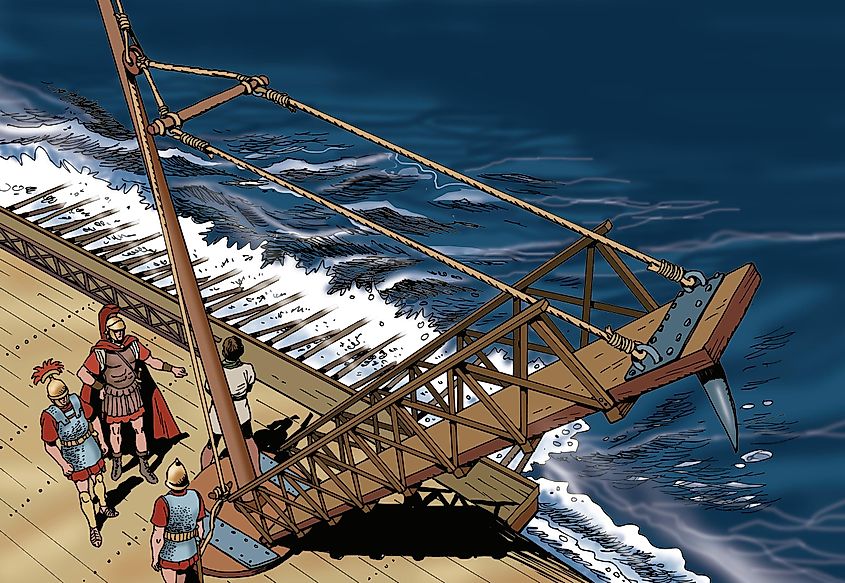
Carthage was not the only power in the Western Mediterranean. While Carthage was establishing lucrative colonies in Sicily and Spain, Rome was securing its hold on the Italian Peninsula. As both nations expanded, they eventually came face to face in Sicily after the Romans conquered the northern part of the island. War broke out in 264 BC with Carthage having a distinct upper hand. They had a much more powerful navy and planned to prevent any attempt at the Romans from landing any more troops on Sicily. The same strategy was also used to defend their holdings in Sardinia and Corsica.
However, the Carthaginians greatly underestimated Roman's tenacity and ingenuity. Despite having little to no experience as sailors, the Romans constructed a massive fleet modeled off of the Carthaginian ships known as triremes after one was recovered when it ran aground during a storm off the coast of Sicily.
The Romans built 300 ships in a matter of months and outfitted them with a new invention called a corvus. A corvus was a long ramp that could be dropped onto nearby enemy ships, allowing them to be boarded with ease. The Romans, knowing the strength of their army essentially turned each naval engagement into a land battle. Even though the Romans suffered heavy losses during the war, they were able to eventually beat back the Carthaginians and force them to sign a humiliating peace treaty ceding their holdings on Sicily as well as handing over possession of Sardinia and Corsica.
The outcome of the war was nothing short of devasting for Carthage. Not only had they ceded large amounts of territory to a rival power but they were in severe debt. A conflict broke out between the Carthaginians and their mercenaries after it was discovered they could no longer be paid. The next few decades were tough for Carthage with many in the ruling class swearing to get revenge on the Romans.
The Revenge Of Hannibal Barca
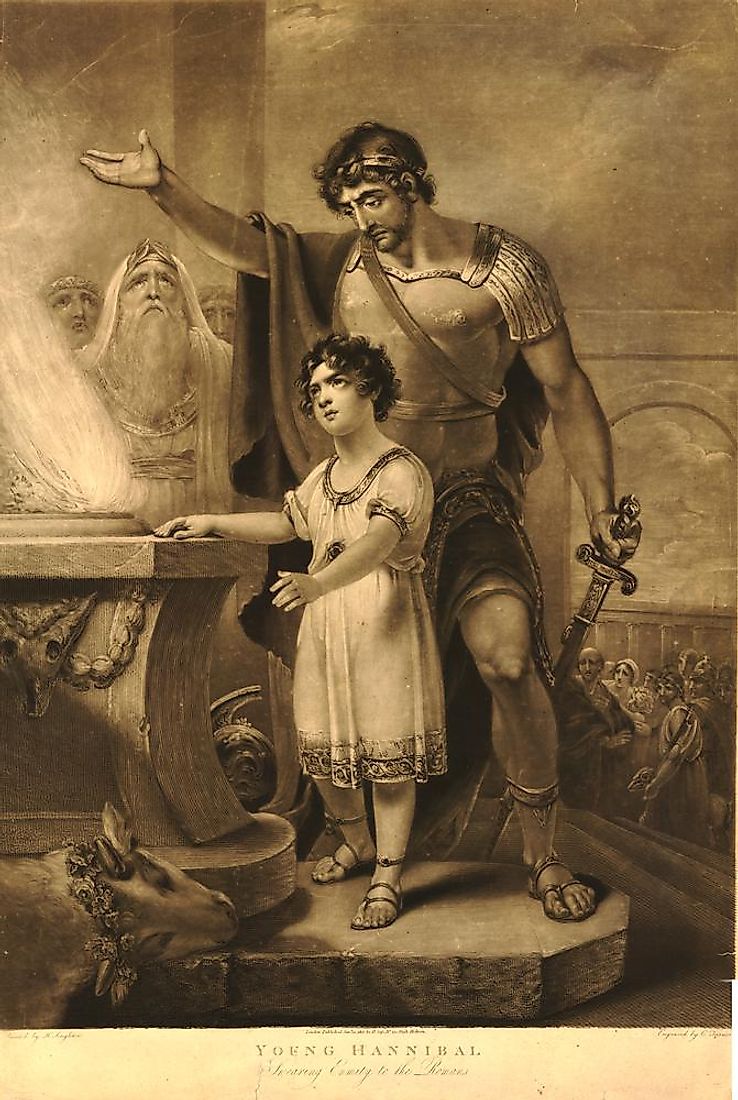
Hannibal Barca was born to an affluent Carthaginian family sometime around 247 BC. The son of a well-respected and powerful general named Hamilcar, a young Hannibal experienced warfare at an early age when he accompanied his father on military campaigns in Spain. Hannibal was taught basic tactics and leadership qualities from the time he was a boy and showed great promise as a military leader even in his adolescence.
Hamilcar had always felt the sting of the Roman victory the most and instilled a deep hatred of Rome within Hannibal. According to the Roman historians Polybius and Livy, as Hamilcar was lying on his death bed he made Hannibal promise him that he would one day destroy Rome. At the age of only 26, Hannibal saw his opportunity to fulfill his promise to his late father and to restore Carthaginian prestige. He marched an army towards the Roman-allied city of Saguntum in Spain and laid siege, marking the outbreak of the Second Punic War.
Marching On Rome
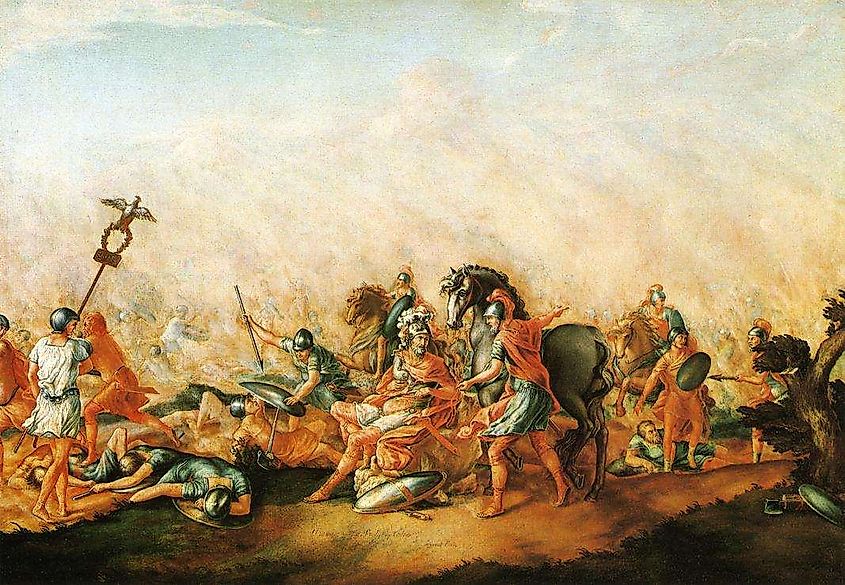
Saguntum fell eight months later and now it was up to Hannibal where to attack next. The Carthaginian navy was still powerful but launching an invasion by sea from Spain was nearly impossible from a logistical standpoint. The only option Hannibal had was to make a daring and unexpected cross of the Alps in Northern Italy.
Hannibal left his brother in Spain and took more than 80,000 troops through Southern France and across the Alps. The journey was far from easy and claimed the lives of thousands along the way, including a large number of war elephants that Hannibal brought with him. Despite the high attrition levels, this daring move caught the Romans by surprise. When Hannibal emerged in Northern Italy, the Romans sent two separate armies to meet him, but both were crushed in spectacular fashion.
In 216 BC, Hannibal delivered Rome one of its most stunning military defeats at the Battle of Cannae. Despite being outnumbered nearly 2-1, Hannibal was able to encircle the Roman infantry and slaughtered nearly all of the Romans. It was only after Hannibal's men got tired from killing that they finally started to take prisoners.
Hannibal spent nearly 15 years marauding through the Italian countryside waiting for Rome to surrender but it never came. The Romans knew they could not defeat Hannibal in Italy, so they focused elsewhere. Rome sent armies into Spain captured major Carthaginian settlements and defeated numerous armies sent to stop them. After Spain was subdued, a Roman army landed in North Africa and directly threatened Carthage. Upon hearing the news of the Roman invasion, Hannibal hurried himself and his army back to face the Romans head-on.
The End Of Hannibal And Carthage
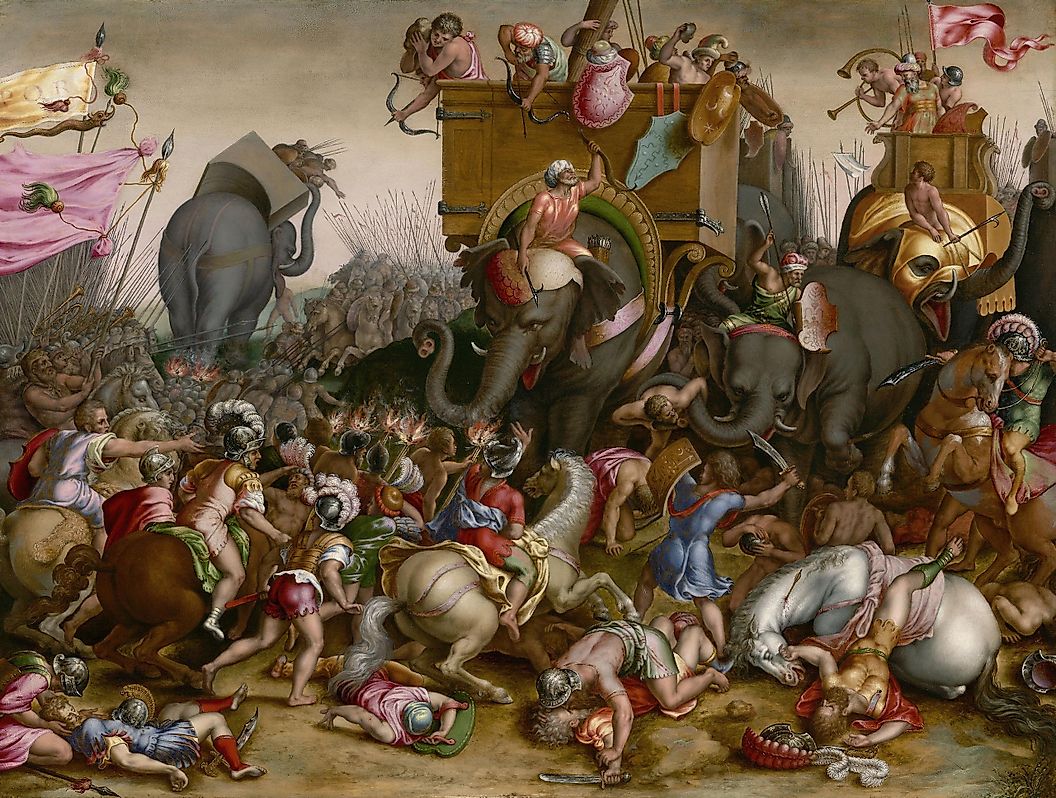
Hannibal met the legendary Roman general Scipio at the Battle of Zama in 202 BC, only a few kilometers outside Carthage. Hannibal's men were exhausted from their long and hurried trip across the Mediterranean Sea. The Romans on the other hand had chosen the field of battle and were sure to use every advantage they could get. This included enlisting the help of Numidian horsemen, a group of nomads who were indigenous to the region.
The battle was fierce, and at times, it seemed as though the Roman lines were on the verge of breaking. Despite moments of doubt, the Romans, using Hannibal's own tactics against him, sent the Numidians around both flanks and trapped the Carthaginian infantry. As the Carthaginians fled the battle thousands were cut down or captured. Hannibal was forced to flee and went into hiding. Rome had won the war.
Carthage sued for peace soon after and received even harsher and more punished terms than before. Roman was given all of Carthage's land with Spain and was forbidden to raise another army or declare war with the direct permission of Rome. Large amounts of war reparations were given to the Romans in the form of gold and silver, leaving Carthage completely bankrupt and powerless.
Hannibal, even though defeated still vowed revenge against Rome. He fled to the Levant and soon found himself in the service of King Prusias of Bithynia. Bithynia was a small power in Anatolia that fought against Roman expansion into the region. Bithynia was eventually conquered as well, and one of the terms of their defeat was that they handed over Hannibal to the Romans. Defiant to the very end, Hannibal committed suicide in 183 BC before he was ever captured.
In 149 BC, the Romans launched a third and final attack against Carthage and destroyed the city. According to legend, the sacking of Carthage was so thorough that Roman soldiers even salted the soil around the city so that food could no longer grow there. Carthage had come to an end.
Even though Carthage met a violent and catastrophic end, the area was once again resettled in the time of Julius Caesar. Roman Carthage continued to be a significant and crucial city in the days of the empire, providing much of Italy with grain and bread. The legacy of Carthage continues to live on today. The military campaigns of Hannibal Barca remain one of the biggest "what ifs" in Roman history. Modern militaries still study his genius and tactics on the battlefield. Even though Carthage is long gone, it remains a fascinating part of the story of Rome and the Ancient World.











